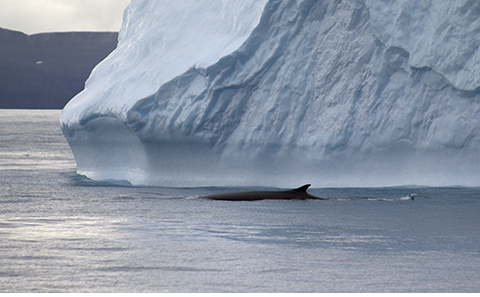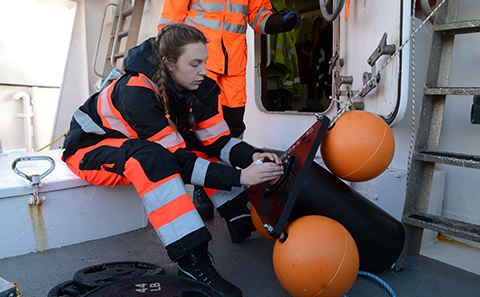Researchers in Antarctica to help safeguard vital krill stocks

The University of Southampton is leading an expedition to the Antarctic Peninsula to survey Antarctic krill and the baleen whales that feed upon them.
The team, who departed the UK a fortnight ago, are travelling to the remote region on a yacht to tag the whales and survey their main source of food - krill, a small shrimp-like crustacean.
Their expedition will provide data to assess whether the current fishery management framework is sufficient to safeguard krill stocks, which underpin the unique Southern Ocean ecosystem.
“The risk is that fishing becomes concentrated in krill-rich predator feeding spots and then depletes them, leaving nothing behind for the marine animals that rely on them to survive,” says Dr Ryan Reisinger from the University of Southampton, who is leading the expedition.
Antarctic krill are one of the most abundant animals on earth and are a major food source for many predators, including fish, penguins, seals and baleen whales. Antarctic krill also send carbon to the deep ocean through the sinking of their faeces and by moulting their exoskeletons. The small crustaceans are the focus of a commercial fishery and are being caught at an increasing rate to be processed into feed for fish farms (e.g. salmon) and oils for nutritional supplements.

At the same time, populations of baleen whales, a major consumer of krill, are in recovery. Fin whales - the second largest baleen whale after the blue whale, had been hunted to near extinction. Now they are growing in number, returning to historic feeding grounds, and finding themselves in competition with fishing vessels.
The Commission for the Conservation of Antarctic Marine Living Resources (CCAMLR) is the international body which sets limits on how much Antarctic krill can be caught, where and when. These catch limits are measured in thousands of tonnes across vast swathes of ocean, but krill are particularly concentrated in smaller shelf areas close to land which are frequented by both predators and fishing vessels.
To address this mismatch in scales, CCAMLR plans to implement finer scale management procedures. To inform this, the researchers from the University of Southampton, the British Antarctic Survey, the University of California Santa Cruz, and the Scottish Association for Marine Science are collecting data to better understand the distribution of foraging fin whales, Antarctic krill and fishing vessels.

Team members from the University of California Santa Cruz are fitting two different types of tags to fin whales. CATS tags provide short-term detailed data, monitoring swimming speed, direction, body orientation and more, while LIMPET tags provide longer-term information on the location and behaviour of the whales.
Dr Reisinger adds: “Tagging whales helps us to understand in far greater detail where and how whales feed on krill, information that is essential for us to manage and conserve Southern Ocean ecosystems. We know surprisingly little about how the largest whales - including fin whales - behave in Antarctica”.
The researchers are using echosounders - a type of sonar - to locate and measure swarms of krill. These are fitted to the bottom of the research vessel and a new type of autonomous vehicle called an ImpYak®. Developed by the Scottish Association for Marine Science, this is essentially a remote-controlled, impeller-driven kayak which will be used to survey near-shore areas that research vessels can’t reach.

Three University of Southampton PhD students are on the expedition, funded by the INSPIRE programme. Amy Feakes, one of the PhD students, said: “Being part of this research cruise has been an incredible learning experience - from collecting data for my PhD to understanding the planning that goes into a research cruise. Working in this challenging environment and with new equipment and technology has given me some new skills which I can hopefully continue to use throughout my PhD.”
The data collected from this fieldwork will be combined with information on fishing vessel activity provided by CCAMLR and Global Fishing Watch to model overlap between krill, whales and fisheries, to provide forecasts which could be used for finer scale, more dynamic fisheries management.
Dr Sophie Fielding, an ecologist at the British Antarctic Survey, said: “Antarctic krill play a central role in the Antarctic marine ecosystem. Making measurements of krill (prey) alongside their predators (whales) in near-shore areas is technically challenging and will provide new insights into controls on swarm behaviour and distribution.”
The project is funded by the UK Government through Darwin Plus.